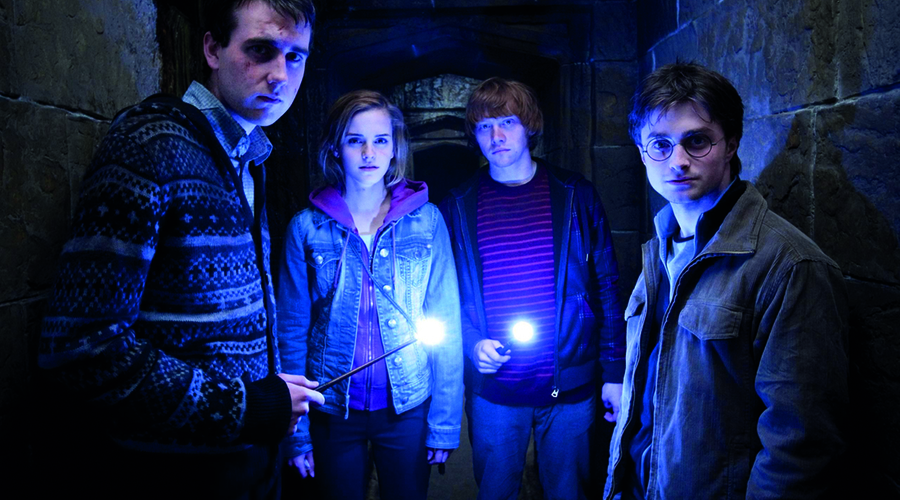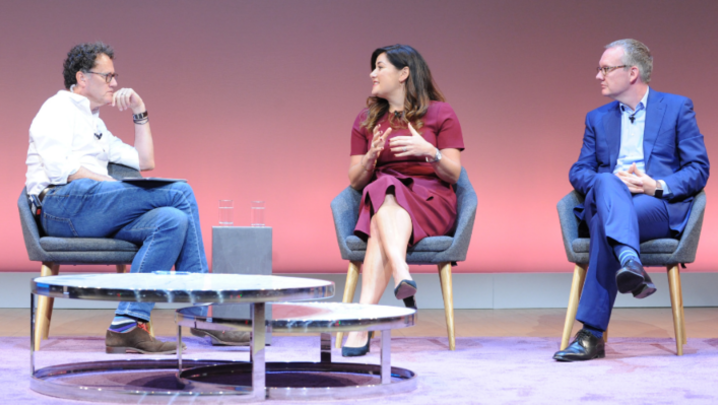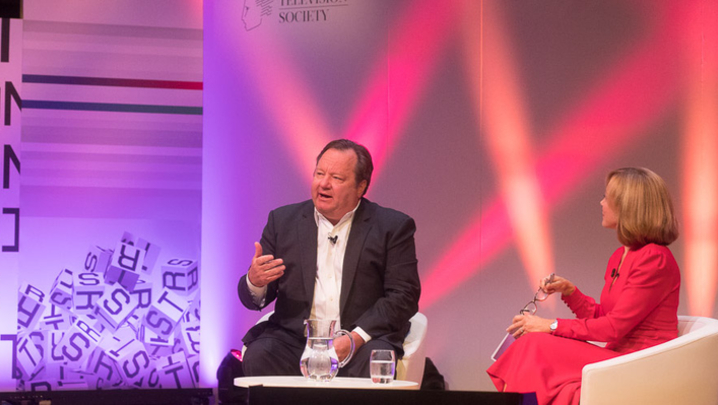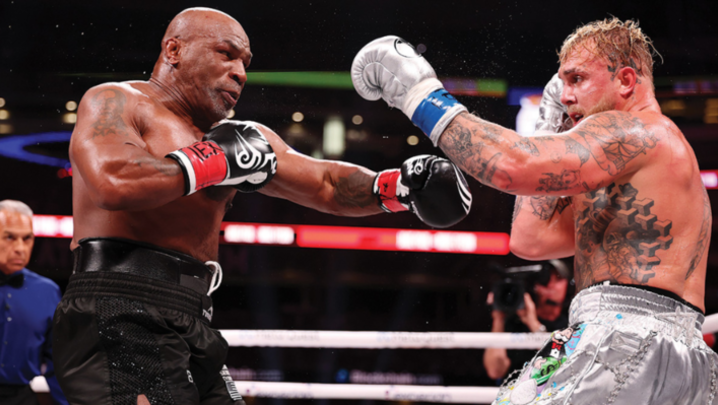From revolutionising the transmission of live events to consuming content on the move, 5G represents a step change in TV, predicts Kate Bulkley
Chicago and Minneapolis may not seem like the homes of cuttingedge technology but, on 3 April, they became the world’s first two cities with commercial 5G mobile services serving 5G-enabled smartphones.
The service was launched by US carrier Verizon, keen to beat several Korean rivals to the bragging rights for commercialising 5G first, if only by a few hours.
All the world-first posturing aside, and after several years of trials and tests, the race to roll out 5G commercially is well and truly on. Despite some concerns about the cost of constructing 5G networks, media companies are beginning to place bets that 5G mobile services will be a game changer.
“The 5G talk has now turned into task forces and a notable step up in appreciating the monetisable opportunities,” says one senior executive at a global media company.
The principle benefit of 5G technology is the faster delivery of mobile content and an end to the headache of buffering files when on the move. But speed is not the whole story. Crucially for content companies, 5G will allow the development of new forms of more immersive and personalised storytelling.
It also promises to deliver step changes in the time and cost involved in preparing for, and transmitting, live coverage, from breaking news to sport.
Moreover, 5G will free up more time for media consumption on the move as the same next-generation mobile technology will be integral to driverless cars.
At a recent Enders Deloitte conference, the CEO of EE, Marc Allera, threw down the gauntlet to the audience: he predicted that “a converged network with 5G at its heart will change TV for ever”.
In Allera’s vision, the future is not just about getting more content delivered faster to smartphones, but about delivering more personalised and interactive content. This includes augmented reality (AR) and virtual reality (VR) plus “loads of things that we can’t give consumers now over legacy broadcast networks”, he said.
EE plans to commercialise 5G in 60 of the UK’s busiest cities over the next few months. Vodafone, Three and O2 have also announced 2019 5G rollout plans.
But there is one potential problem: the partial or complete ban on the use of Huawei telecommunications network equipment due to western security concerns about using the Chinese company’s kit.
If implemented, this ban could slow the UK 5G rollout by 18 to 24 months and cost the UK economy as much as £6.8bn, according to a new report from Assembly Research, commissioned by industry body Mobile UK.
Despite potential delays, Allera predicted that a “fully converged IP network” in the UK should be up and running sometime in the next three to five years. The next-generation network will allow customers to access the speed of 5G both at home and on the move, providing a “seamless, fast and reliable internet experience”.
The promise of 5G is immense: the next-generation wireless technology will be up to 100 times faster than the current 4G standard for consumers. It will be possible to download a digital movie in just 10 seconds at speeds of 300Mb/s. Over 4G, this same download takes three to four minutes at 20Mb/s.
"We see 5G changing everything about how media is produced and consumed"
Even faster speeds, theoretically reaching 10Gb/s on standard hardware, mean that 5G is also perfectly suited for delivering AR and VR. Removing buffering issues on mobile handsets opens up all sorts of creative opportunities for content creators, especially in live sports and gaming, both of which require real-time access to rapidly changing data.
No wonder, then, that Disney’s StudioLab partnered with Verizon in January to explore the possibilities of 5G for media and entertainment. “We see 5G changing everything about how media is produced and consumed,” Walt Disney Studios chief technology officer Jamie Voris told Variety in January.
5G networks bring some obvious opportunities for content production and transmission: outside broadcast vehicles could generally become unnecessary at live events. Reporters already use smartphones to report from remote areas and breaking-news events: 5G will enhance their ability to file live.
“Sports broadcasts of live streams are often multiple tens of seconds behind the live feed,” explains Tony Maroulis, research director at Ampere Analysis. “So, 5G presents some opportunities there.” Once 5G networks are deployed to a “mainstream degree”, this will enable “greater personalisation and engagement for video consumption, further shifting viewing from a joint TV experience to an individual one”.
But he cautions that “a lot of the applications are still at a ‘proof of concept’ rather than an ‘actually solve a problem’ stage”.
Mobile distribution is already a key strategic priority for most big media companies – 5G only adds to the appeal. In the UK, services such as Netflix and YouTube are already among the most popular applications for mobile customers. Access to these services requires no set-top box or TV screen.
Viacom and Disney are among the big media players that have already leaned into mobile distribution. They see mobile as not only another monetisation channel for their content but also as a way to compete more effectively with Netflix and other over-the-top streamers.
Mobile telecoms operators, for their part, are keen to add more exclusive content to their services to differentiate themselves from rivals. Allera put a name to the EE content plan: “We want to be super aggregators of content”.
Last month, Disney launched a new mobile content service in Japan on DoCoMo, a telco with 77 million subscribers. All of Japan’s mobile operators are set to roll out 5G later this year. DoCoMo hopes to stand out from its biggest local competitors, SoftBank and KDDI, both of which already offer Netflix. The Disney-DoCoMo deal will feature the latest releases from four Disney studios – Walt Disney Studios, Marvel Studios, Pixar and Lucasfilm.
Viacom also sees mobile distribution as a key area of distribution diversification. It is especially keen to see “real traction” internationally, where it already offers its content to 5 million mobile subscribers.
Last year, Viacom International Media Networks signed a wide-ranging deal with the telco Telefónica for its TV channels, some of its streaming apps and VoD content across its Latin American footprint. It also has mobile distribution deals in Sweden with Telenor for its Paramount+ streaming service.
In March, Viacom signed an agreement with BT Group’s mobile unit, EE, to launch the first-ever MTV direct-to-consumer subscription VoD streaming app, MTV Play.
"Mobile distribution is the catalyst that will [reinvigorate] television"
Then, earlier this month, the company signed a major programme deal with T-Mobile in the US to offer a content package of Viacom brands to its 80 million mobile customers. Viacom sees its newly acquired ad-supported VoD service, Pluto TV, as a value-added app for mobile networks.
Viacom President and CEO Bob Bakish believes that signing deals now will accelerate the transition to “next-generation platforms”, including those running on 5G. This could help Viacom tap into new audiences who might never have watched traditional TV. Speaking at the CES conference in Las Vegas in January, Bakish was bullish about the potential for mobile and 5G, saying that “mobile distribution really is the catalyst that will turn this whole ‘decline of television’ argument on its head”.
This could be especially true among younger demographics, who are not watching traditional TV in traditional ways. For Viacom, with its younger-skewing brands such as MTV, Nickelodeon and Comedy Central, it is crucial to be where the audiences are. Mobile is therefore a big opportunity.
The financial returns on mobile content deals are “similar to, [and] in some cases actually better than, what we see on the pay-TV side”, says David Lynn, President and CEO of Viacom International Media Networks.
EE’s Allera says that 5G will also help to blur the lines between gaming and video story telling – it “will change everything for everyone” and especially for entertainment because “you’re going to go from watching content to being immersed in the content of the games that you play”.
Niantic, the company behind mobile AR game phenomenon Pokémon Go, is set to release a new multiplayer game using AR late this year, Wizards Unite, based on the Harry Potter franchise.
The game will capitalise on the low latency of 5G and new computing technologies that mean gamers no longer need to be tethered to a games console.
Also launching later this year is Google Stadia, a Cloud-based games streaming service that promises games in 4K ultra-high definition. When 5G rolls out, Google says it will be able to support 8K definition and even higher.
Ovum forecasts that AR and VR experiences alone will generate a total of $140bn from 2021 to 2028.
"Mobile [will become] a primary video entertainment distribution channel"
The immersive and new media applications – some of which remain at the speculative stage – are forecast to generate more than $67bn annually by 2028. That sum equals the value of the entire global mobile media market (including video, music, and games) for 2017.
“The video space is ripe for innovation with the transition to 5G,” says Ed Barton of Ovum. “Rather than supplementing viewing experiences native to other screens, mobile is set to come into its own as a primary video entertainment distribution channel.”
The growth of video consumed on mobile has been astonishing in 4G – 5G is only going to continue that trend, according Ovum’s “5G economics of entertainment report”.
By 2026, there will be more media consumption over 5G networks than over 4G. Ovum says that will be worth an extra $765bn by 2028 – by which time, media and entertainment companies will be competing to win a share of a near-$3tr cumulative wireless revenue opportunity. And nearly half of this ($1.3tr) will be enabled by 5G networks, predicts Ovum.
Self-driving cars – whose autonomy will be underpinned by 5G communications – will offer passengers more time to consume media.
“The last vestige of video-free consumption is the automobile,” said Viacom’s Bakish at CES. “Those of us in media and entertainment have to think about how to transition from being living-room companies to being everywhere companies, both in the kind of content we produce and in how we deliver it.”
Given the increasingly competitive landscape for both telcos and media companies, 5G offers enticing opportunities for providers and consumers looking for the next step change in consumption and creativity.






